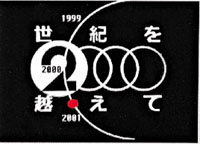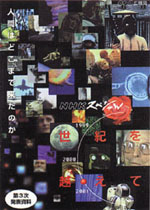
| In the 1980's, anxiety grew in many countries about the drawbacks of economic growth and rapid globalization, the confrontation between East and West, and nuclear proliferation. People began to re-appraise their own lives, placing a new emphasis on peace, both for themselves and for the world. |
Past, present and future |
| Unique programming The NHK Tokushu series represented an effort to produce television programs that only NHK could make. Audience share was not the top priority, as the wide-ranging figures themselves (from 3% to over 30%) made clear. Instead, the focus was placed on NHK's particular strengths and raison d'être, on the programs that NHK could make because it was NHK, and that NHK had a duty to make because it was the public broadcaster. Such programs took their place alongside more conventional ones dealing with entertainment, sports and culture. The original spirit of NHK Tokushu continues today in the NHK Special series. |
Observing our world The mission for both NHK Tokushu and NHK Special was to focus on the past, present and future of people and the planet. This was reflected in the titles of individual programs: The 20th Century on Film, The World after Nuclear War, Warning for the 21st Century, 2000 and Beyond, The Yellow River, The Miracle Planet, Messages from the Past, and of course, The Silk Road. These programs explored our miraculous planet and the rise and fall of great civilizations upon it, revealing the earth in its fullness as a very special life-supporting environment in a vast universe. Human beings were depicted as a fragile and still infant-like element of a global eco-system. |
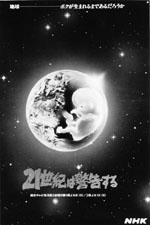 Warning for the 21st Century |
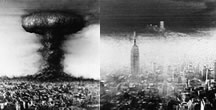 The World after Nuclear War |
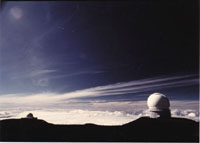 The Miracle Planet |
Canadian media theorist Marshall McLuhan suggested that human beings are not conscious of what influences them most. Because TV is taken for granted, it is difficult to assess its influence, strengths and weaknesses. In 1925, when radio broadcasting began in Japan, Goto Shimpei, the first president of NHK's forerunner, the Tokyo Broadcasting Station, listed four main aims of broadcasting:
This was an enlightening declaration. Television, though, portrays reality even more vividly than radio, and therefore has even more potential to change social and individual attitudes. It is now impossible to imagine a political, economic or social system without television. In 1957, the social commentator Oya Soichi criticized TV as the "intellectual scourge of 100 million Japanese," while in 1961, the chairman of the U.S. Federal Communications Commission said of TV, "I can assure you that you will find it is a vast wasteland." Overall, however, TV has fulfilled viewers' craving for stimulation and knowledge. It has also played an important role in supporting and strengthening democracy. |
In 1969, people watched on live television as the first man set foot on the moon. Such experiences can only have lasting repercussions for the very way human beings think about reality. What future impacts can we expect from the experience of viewing the earth on television from space and seeing a borderless world, a single living organism? |

